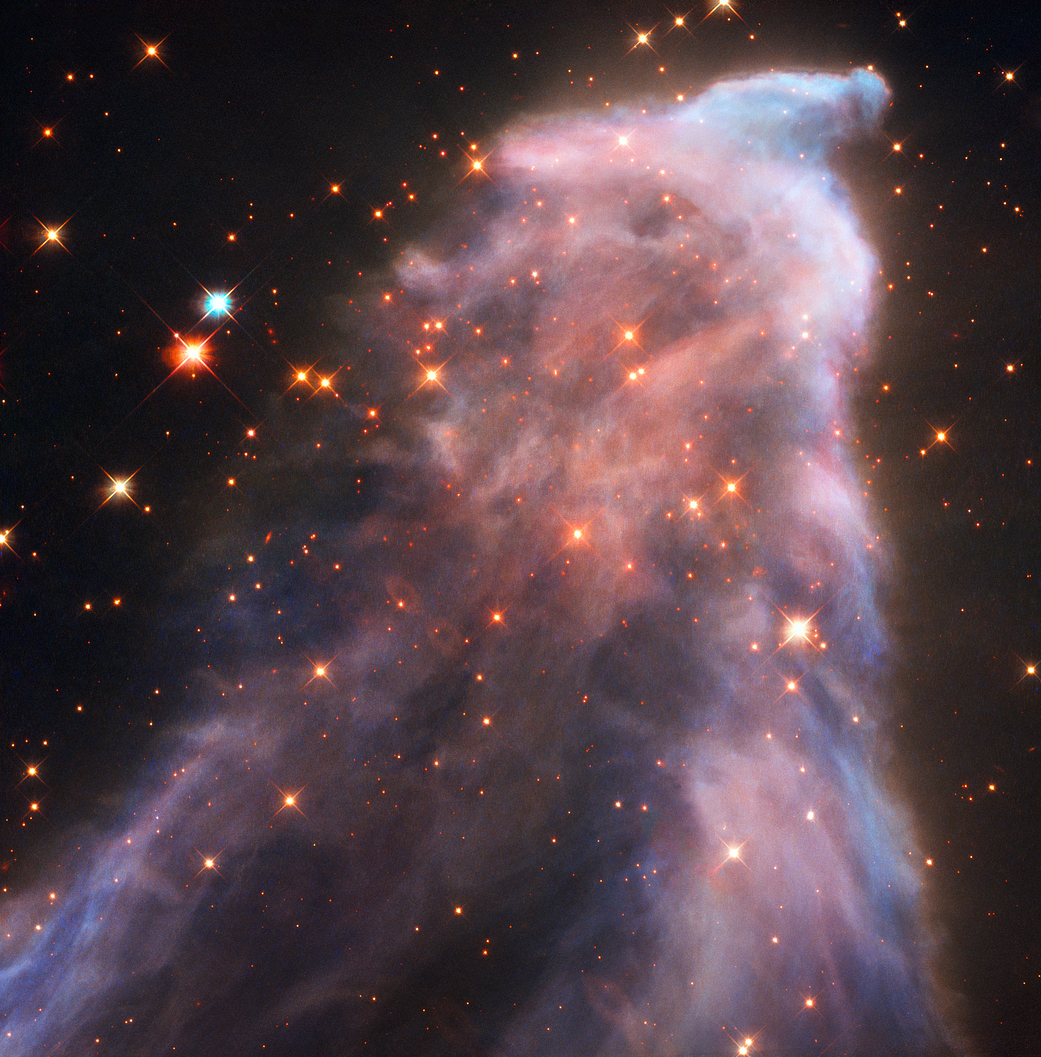The Cosmos with IC 63
Powerful gushers of energy from seething stars can sculpt eerie-looking figures with long, flowing veils of gas and dust. One striking example is “the Ghost of Cassiopeia,” officially known as IC 63, located 550 light-years away in the constellation Cassiopeia the Queen.
The nebula’s ethereal glow might remind people of apparitions such as those reported by paranormal investigators. In reality, it’s simply hydrogen that is being bombarded with ultraviolet radiation from the nearby, blue-giant star Gamma Cassiopeiae (not seen here), causing it to glow in red light. The blue color is from light reflected off of the nebula’s dust.
The IC 63 nebula is not the only object under the influence of the blinding star, which unleashes as much energy as 34,000 suns. The Ghost Nebula is part of a much larger nebulous region surrounding Gamma Cassiopeiae that measures approximately two degrees on the sky — roughly four times as wide as the full Moon.
The constellation Cassiopeia is visible every clear night from mid-northern and higher latitudes. Its distinctive “W” asterism, which forms the queen’s throne, is best seen high in the sky on autumn and winter evenings. Gamma Cassiopeiae, the middle star in the W, is visible to the unaided eye, but a large telescope is needed to see IC 63.
